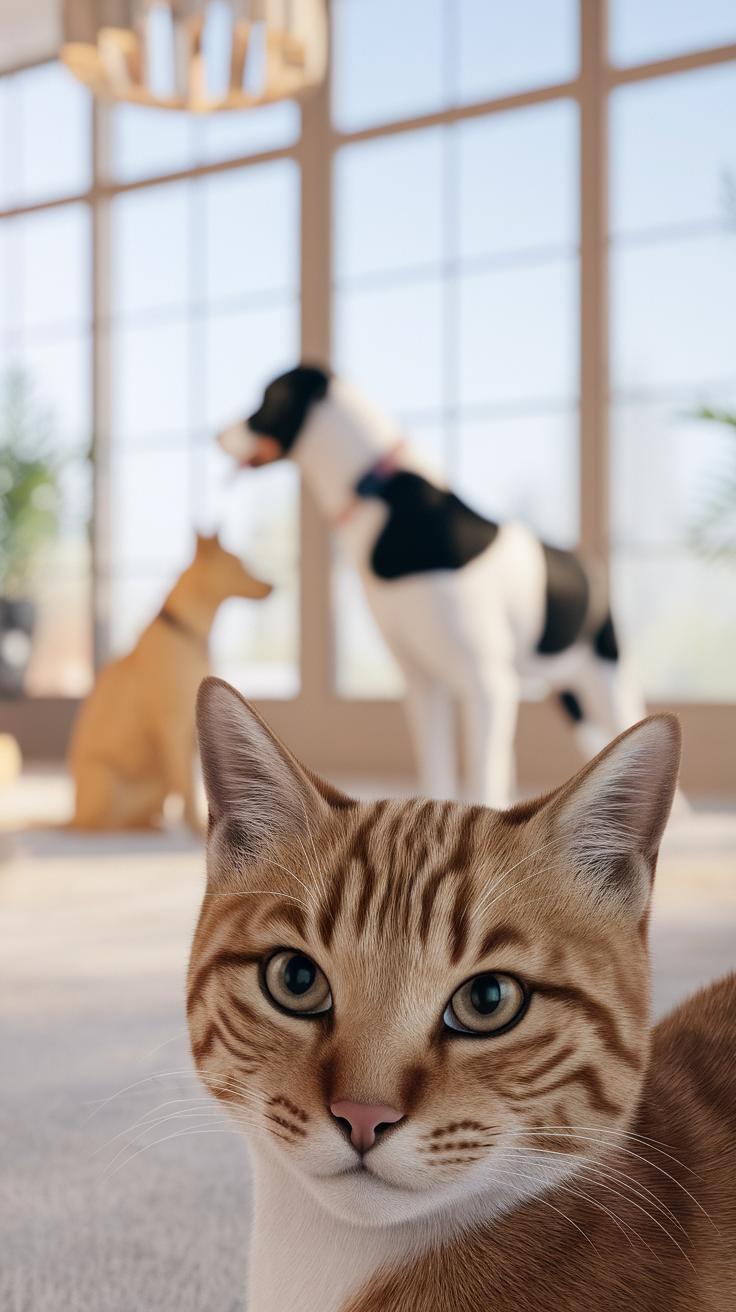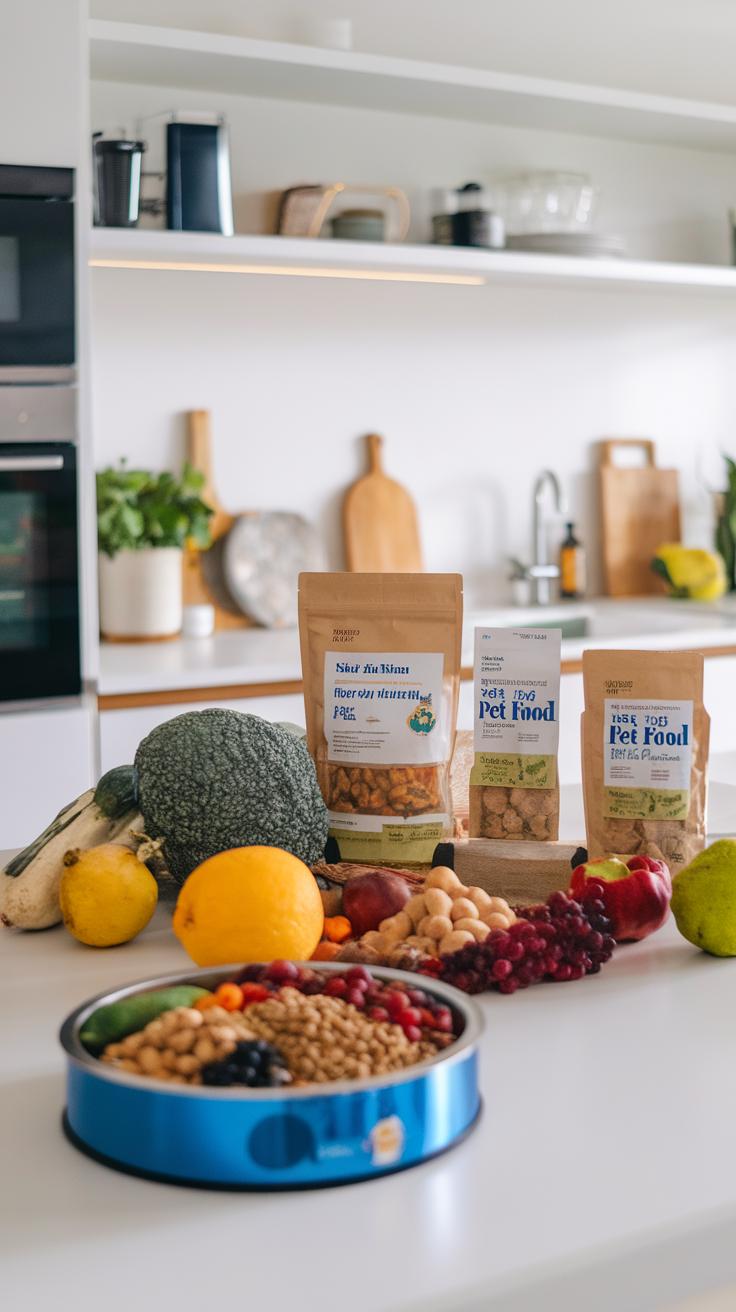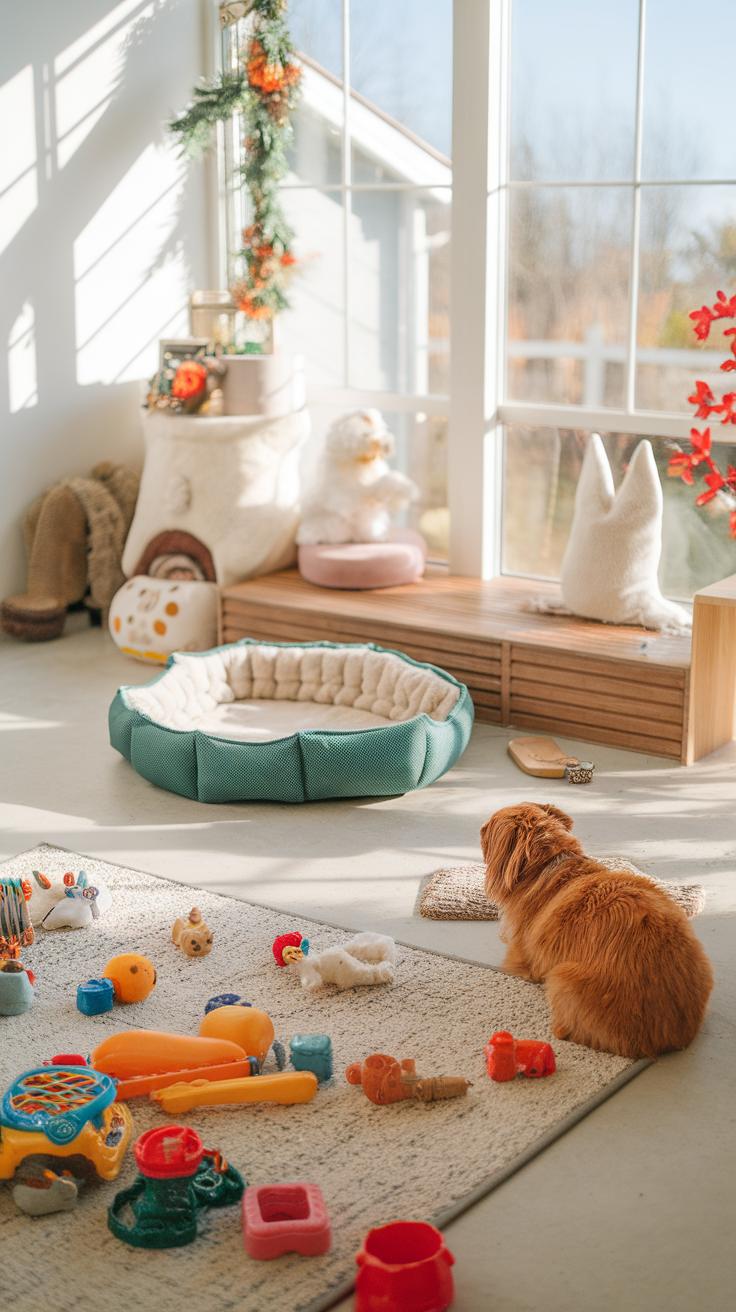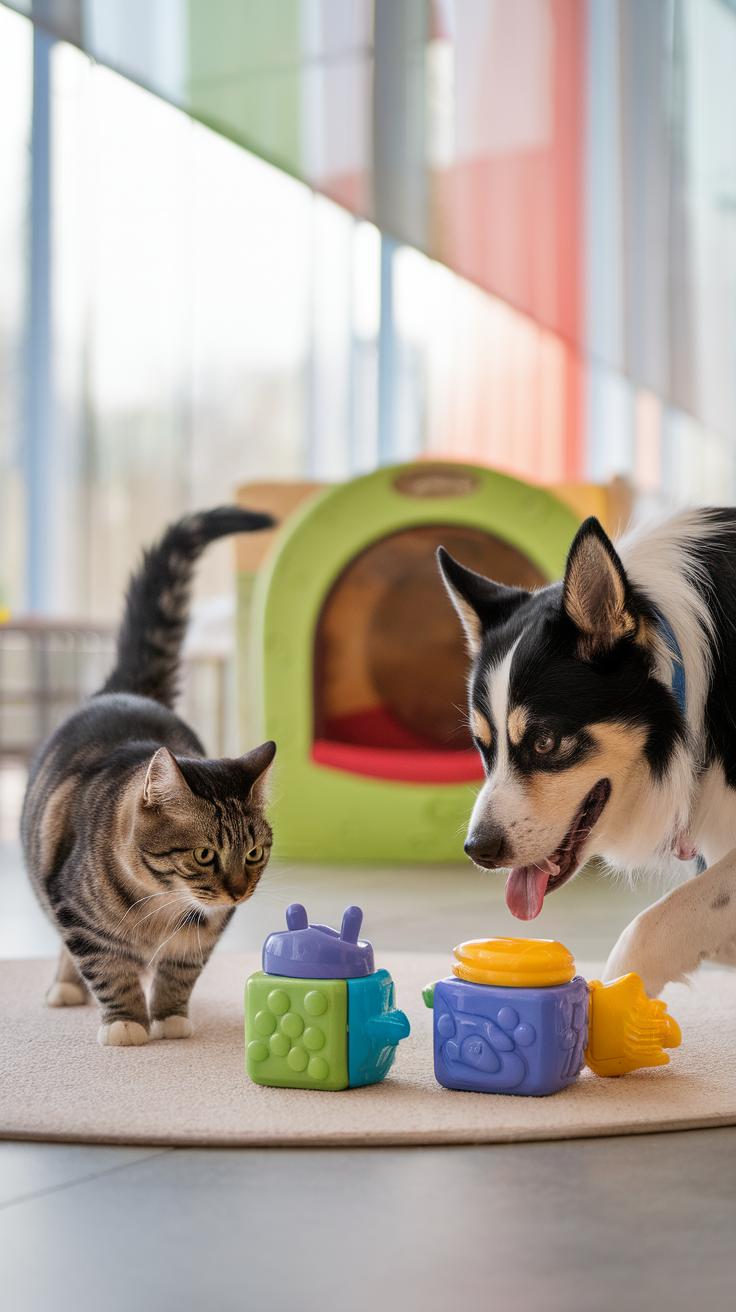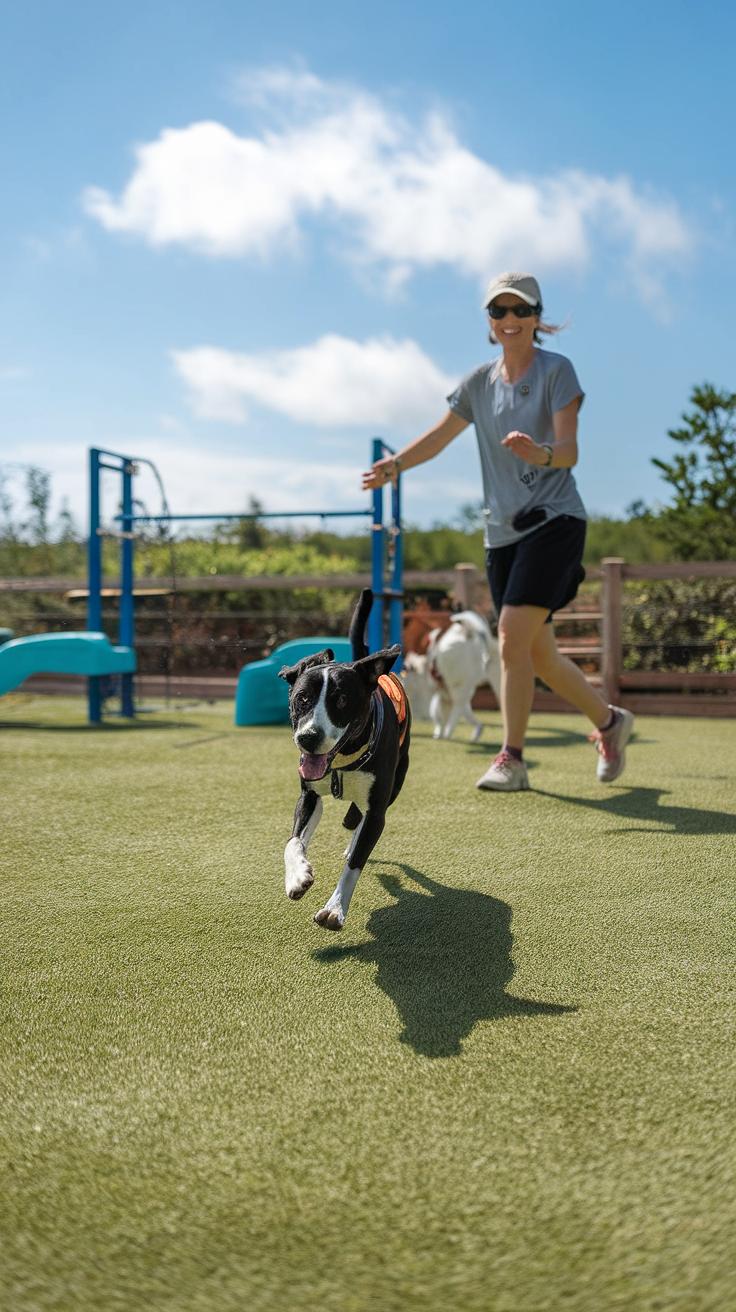Introduction
Creating a joyful and enriching environment for animals at home involves understanding their unique needs. Be they pets or wildlife visitors, happy animals thrive when their physical, mental, and emotional well-being is considered. This article explores the various facets of creating a harmonious habitat that not only meets their basic needs but also enhances their overall happiness.
From selection of proper nutrition to providing stimulating activities, achieving a balance in an animal’s environment plays a critical role. Exploring different strategies for indoor and outdoor spaces, we aim to illuminate ways to ensure that animals, whether they be furry, feathered, or scaled, can experience a vibrant life free from stress and discomfort.
Understanding Animal Behavior Keys to Creating Happy Animals at Home
Cues and Signals of Animal Happiness
Creating a joyful living environment for animals begins with understanding their behavior. Animals communicate their feelings through body language, vocalizations, and other cues. For instance, a wagging tail in dogs typically signifies happiness, while a relaxed posture indicates comfort. Cats that knead with their paws demonstrate contentment, whereas ears pinned back may suggest stress or discomfort. Observing these behaviors is essential for recognizing when an animal feels secure or when something may be amiss.
Environmental factors such as space, stimulation, and social interactions play significant roles in an animal’s happiness. Providing enrichment activities that engage natural instincts—like scratching posts for cats or safe chew toys for dogs—can significantly enhance their well-being. A keen awareness of these behaviors and adjustments to their surroundings ensures that pets remain joyful and healthy in their homes.
Choosing the Right Nutrition The Foundation of Animal Happiness
Understanding Dietary Needs for Various Pets
Nutrition plays a pivotal role in an animal’s overall well-being and emotional happiness. Each species requires specific dietary components to thrive. For example, dogs typically benefit from a balanced diet that includes proteins, carbohydrates, fats, vitamins, and minerals. High-quality dog food or home-cooked meals can provide these essentials, supporting their energy levels and mood.
Cats, being obligate carnivores, thrive on diets rich in animal proteins and fats. It is crucial to choose high-protein foods designed for felines, ensuring their health and agility. For smaller pets like rabbits or guinea pigs, a mix of hay, vegetables, and pellets helps maintain their digestive health and vitality. Understanding these unique dietary preferences is vital for fostering happy, healthy pets.
The Importance of Fresh Water and Portion Control
Alongside a proper diet, access to fresh water is essential for all pets. Hydration influences not just physical health but also behavior; a well-hydrated pet is often more active and content. Portion control is another key aspect that contributes to a pet’s happiness. Overfeeding can lead to obesity and related health issues, which in turn affects an animal’s mood and energy levels. Ensuring that each pet receives the right portions based on their size, age, and activity level helps create a balanced, joyful living environment.
Creating a Safe and Engaging Environment Setting Up Joyful Spaces for Happy Animals
Indoor Spaces: Safety Meets Engagement
Designing a safe indoor environment for pets is fundamental to ensuring their well-being. The first consideration involves using pet-friendly materials for furnishings and decor, which can prevent injuries from sharp edges or toxic substances. Special attention should also be given to securing cords, small objects, and cleaning supplies out of reach. Beyond safety, creating engaging spaces involves introducing interactive elements. Cat trees, scratching posts, and dedicated play areas filled with toys can provide stimulation, encouraging physical activity and exploration. Incorporating cozy bedding and hidden spaces will offer pets a sanctuary to retreat to when they desire privacy and comfort.
Outdoor Spaces: Safety and Discovery
When designing outdoor areas for pets, it’s vital to create secure enclosures to prevent escapes while allowing free exploration. Installing fences with buried bases can thwart digging and secure the perimeter. Enriching outdoor spaces with various textures, such as grass, gravel, and small obstacles, promotes an exploratory environment. Plants should be selected carefully to ensure they are non-toxic to animals. Creating shaded areas and water sources will encourage outdoor activity, keeping pets comfortable during playtime. Landscaping with pet-friendly paths and trails not only provides physical exercise but also enhances sensory experiences, leading to a happier, healthier life.
The Role of Mental Stimulation Secrets to Creating Happy Animals At Home
Understanding Mental Stimulation for Pets
Mental stimulation is vital for maintaining the happiness and well-being of pets. Engaging their minds can relieve boredom and reduce anxiety, preventing behavior issues stemming from lack of engagement. Pets, regardless of species, thrive when challenged cognitively, thus enhancing their quality of life. Introducing puzzle toys, which encourage problem-solving, or interactive games that require active participation can significantly contribute to their mental wellness. Regularly rotating these activities helps keep their interest alive and stimulates their natural instincts.
Practical Methods to Enhance Cognitive Engagement
Incorporating training sessions into daily routines serves as an excellent way to provide mental exercise while reinforcing good behavior. Dogs can learn new tricks, and cats can engage in playful training exercises such as clicker training. Enrichment activities like scent games or hiding treats around the home challenge animals’ foraging instincts. Nature walks or exploring new environments can also provide fresh experiences that stimulate both mind and body. Creating an environment filled with varied and interactive elements is key to fostering a joyful and motivated pet.
Socialization and Its Importance Fostering Happy Animals Through Interaction
Enhancing Pet Happiness Through Social Engagement
Social interaction plays a pivotal role in the happiness of pets. Just like humans, animals thrive on companionship and connection. Regular socialization opportunities can enhance well-being, decrease anxiety, and reduce behavioral issues. Engaging with other animals and humans not only fulfills their need for interaction but also builds confidence and eases temperament. Activities such as playdates, obedience classes, or visits to pet parks allow pets to learn essential social skills while expending energy. This creates stimulating experiences that engage their minds and enrich their lives, promoting overall contentment.
Strategies for Integrating Social Time
Incorporating social engagement into a pet’s daily routine can be done in various ways. Scheduling routine playdates with fellow pet owners, joining local training groups, or even participating in charity walks provides ample avenues for social interaction. For pets that may be shy or hesitant, gradual exposure is key. Consistently introducing new friends or environments leads to a positive association with these experiences, fostering a sense of belonging and joy. By prioritizing socialization, pet owners can significantly contribute to their animal’s happiness and mental health, complementing the mental stimulation and exercise needed for a well-rounded life.
Physical Activity and Exercise Secrets to Creating Happy Animals at Home
Understanding the Role of Exercise in Animal Happiness
Adequate physical activity plays a vital role in the happiness and overall well-being of animals. Engaging in regular exercise helps alleviate stress, maintain a healthy weight, and promote mental stimulation. Dogs, for instance, thrive on daily walks and play, while cats benefit from interactive toys that encourage jumping and pouncing. For small mammals like rabbits and guinea pigs, spacious enclosures with tunnels and ramps allow for natural behaviors and exercise.
Tailoring Activities for Different Species
Knowing the right type of exercise for your pet can significantly enhance their joy. Dogs require vigorous activities such as fetch or agility courses, depending on their energy level, while indoor cats enjoy climbing trees and chasing feather wands. Birds also need time outside their cages, where they can fly and explore. Creating an enriching environment with different activities allows each species to express its natural instincts, leading to happier, healthier pets.
The Impact of Grooming Routine Care for Happy Animals
Strengthening Bonds Through Grooming
Routine grooming plays a significant role in enhancing the physical health of pets, ensuring their coats remain clean and free from parasites. Regular brushing can prevent matting and shedding, thereby promoting overall comfort. This proactive approach not only addresses health needs but also creates a perfect setting for nurturing the bond between owners and their animals. During grooming sessions, intimate interactions occur that strengthen trust and understanding, fostering a deep emotional connection.
A Source of Joy and Relaxation
Grooming can be a source of joy for animals, as many pets enjoy the sensory experience associated with being brushed or bathed. Tailored grooming practices that cater to an animal’s preferences can elevate their happiness significantly. Furthermore, incorporating positive reinforcement during these sessions can make them enjoyable and rewarding, turning grooming into a delightful routine rather than a chore. Emotional fulfillment derived from these moments is irreplaceable, contributing greatly to a thriving, joyful living environment.
Home Safety for Pets Essential Measures for Happy Animals
Creating a Secure Living Environment
Ensuring the safety of pets within the home is foundational to creating a joyful living environment. Begin by securing all hazardous items such as cleaning supplies, medications, and small objects that could be swallowed. Designate areas for pets to roam free while restricting access to rooms or spaces where dangers lurk. For instance, installing baby gates or using pet-proof latches on cabinets can make a significant difference.
Another critical aspect involves monitoring the surroundings for potential dangers. Check that electrical cords are tucked away, and ensure windows have secure screens. When it comes to outdoor spaces, ensure fencing is secure while being mindful of toxic plants and chemicals. Making these changes not only protects pets but also cultivates an atmosphere where they can thrive without the constant worry of encountering harm.
Routine Safety Checks
Regular safety assessments will help maintain a secure home for pets. Schedule periodic checks to identify any newly introduced hazards, whether from home repairs or changes in furniture arrangements. Changing seasons can also introduce new risks; for example, ensure that snow and ice do not create slippery conditions for pets walking outside. Keeping a checklist of safety measures to routinely review can ease this process, promoting a stable environment where animals feel safe and happy.
Understanding Different Species Needs Creating Joyful Living Environments for Pets
Dogs: Loyalty and Active Engagement
Dogs thrive on social interaction, physical activity, and mental stimulation. Providing daily walks, engaging play sessions, and training can significantly enhance a dog’s happiness. An environment that encourages exploration, like a secure yard or nearby park, can satisfy their natural curiosities. Access to enriching toys and puzzles can keep their minds sharp, ensuring they remain content. Importantly, a consistent routine fosters a sense of security, allowing dogs to feel more relaxed and joyful in their home environment.
Cats: Independence and Comfort
Cats, known for their independent nature, require a different approach to create their happy spaces. They appreciate vertical space, such as cat trees or shelves, to satisfy their climbing instincts. Cozy hiding spots and quiet areas enable them to retreat when feeling overwhelmed. Regular playtime, especially with interactive toys, addresses their hunting instincts, while a balanced diet contributes to their overall well-being. Understanding and respecting their boundaries is essential in ensuring they feel safe and secure within their home.
Exotic Pets: Unique Needs and Enrichment
Exotic pets, ranging from reptiles to birds, come with distinct care requirements that must be met for their happiness. Each species needs specific habitat conditions, including temperature, humidity, and lighting. For instance, reptiles require heat lamps and humidity control, while birds often thrive in social environments with opportunities for play and stimulation. Providing appropriate food, environmental enrichment, and social interaction can promote their overall happiness. Tailoring care to their unique habits and behaviors will cultivate a safe space that encourages thriving and contentment.
Conclusions
Ensuring that animals at home are happy boils down to understanding their specific needs and responding to them with care and creativity. The principles outlined, from providing proper nutrition to creating stimulating environments, serve as frameworks for enhancing an animal’s life, whether it be a dog, cat, or any other species.
As caretakers, the responsibility lies in our hands to foster joy and comfort, making the necessary adjustments based on their behaviors and preferences. By cultivating an atmosphere that supports their happiness, we not only enrich their lives but also deepen our bond with them in a meaningful and fulfilling way.


